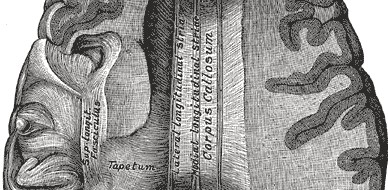Jonathan Temte, MD, PhD
School of Medicine and Public Health
2023
Essay
We arrived in Madison the same fall; both relocating from the Pacific Northwest. It was 1983. I was moving out of a marine mammal graduate program at Oregon State University to attend Medical School at the University of Wisconsin; she was on loan from the Point Defiance Zoo and Aquarium in Tacoma, Washington. I arrived in mid-August and she in early October.
Our paths had crossed once before. I had arranged to draw blood from the harbor seals at Point Defiance as part of my research on reproductive timing of pinnipeds. She would have been there when we drained the pool and drew samples from the seals.
The harbor seals at Henry Vilas Zoo were a comfort to me during the early uncertainties of medical school. Their serene loops in the nicely shaded waters of the seal enclosure were familiar from my days in the field; wild seals often cruise with their bellies to the sky; predators come from below, never above. I quickly noted the yellow flipper tags on one seal, the blue on another. They were likely placed by an acquaintance of mine from the Washington Department of Fish and Wildlife. Yellowtag, as she was known then, had been recovered as an abandoned pup on the Washington Coast in 1970, along with Boston Blackie—the seal with blue flipper tags. Many trips were made to the zoo in my first year in Madison, as I lived only a few blocks away.
I received an MD/PhD scholarship during my second year of medical school and drifted from medicine for a time. My research continued on reproductive timing of seals and sea lions; but my base of operations changed from Oregon State University to the Department of Zoology at the UW. Yellowtag became a subject in one of my papers on precision and heritability of birth timing in 1991, and again in a 1994 paper on photoperiod control of birth timing in harbor seals.
Over the years, the locust-tree shaded seal pool was a refuge from demands of career and medical practice. My wife served as a zoo education volunteer for years; our kids grew up with frequent visits to see the seals and the other denizens of Henry Vilas Zoo. My oldest daughter was enough of a fixture in her early years that she earned the name “Zoo Baby.” During this time, my guilty pleasure was to sneak over from my nearby departmental office to indulge in a chili dog and a bag of chips for lunch; an impromptu picnic on one of the benches near the seal enclosure.
Yellowtag became Betty; she continued to loop gracefully through the water. The years passed by as we both aged. Then, on May 16, 2012, at the advanced age of 42, Betty gave birth to Lucille, becoming the oldest known harbor seal to have a pup (they rarely live past 12 years in the wild). Three years later, Betty—by then, the oldest of her kind in the world—moved to new surroundings in the recently completed Arctic Passage exhibit, where she preferred the quietness of an interior salt-water tank to the bright, exposed outside pool. But, on occasion she still graced those waters. I, eleven years her senior, continued to drop by on from time to time and, if lucky, caught those graceful loops and wandered back across the years.
Betty died on July 15, 2019, in her fiftieth year, far surpassing the life expectancy of harbor seals, wild or captive. Through the years, she served as a bridge not only to my past, but to the hope of the future. I often include her photo as I teach about public health—a testament to what clean water, a dependable food supply, the lack of predation and parasites, and—perhaps—a little veterinary care can do. Godspeed my friend…
Scientific papers featuring Yellowtag/Betty:
Precise birth timing in captive harbor seals (Phoca vitulina) and California sea lions (Zalophus californianus). Marine Mammal Science. 1991, 7(2):145-156.
Photoperiod control of birth timing in the harbor seal (Phoca vitulina). Journal of Zoology (London). 1994, 233(3):369-384.
Phenomenal advanced age of pupping in a captive Pacific harbor seal (Phoca vitulina richardsi). Zoo Biology. 2015, 34(6):522-524.
